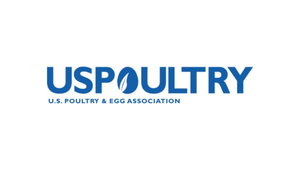The list of exotic/foreign animal diseases in North American swine industry continues to grow and will be topic of discussion at American Association of Swine Veterinarians' upcoming annual meeting.

The list of exotic/foreign animal diseases in the North American swine industry continues to grow and will be a topic of discussion at the American Association of Swine Veterinarians' (AASV) upcoming annual meeting in Denver, Colo.
In his paper prepared for the Tuesday morning general session, Dr. Butch Baker of Ames, Iowa, raised the question of whether the rise in disease agents is related to the failure to observe and practice good disease control or if it is time to rethink and redesign current biosecurity efforts. Perhaps even a combination of both is needed, he suggested.
Baker also contemplated how the industry should be discussing biosecurity with the vast majority of non-scientific consumers. Biosecurity may be better referred to as “health assurance” or “health and well-being security” when addressing those audiences, he said.
Baker noted that one approach to farm biosecurity would be a hazard analysis and critical control point (HACCP) discovery and intervention method. Such a HACCP approach would start with an understanding of how all things enter and exit a site. From there, a determination would need to be made of those risky farm procedures that could possibly be controlled and control points would need to be identified for implementation.
“This method is rarely used today, as veterinary and other 'experts' believe they know all things that occur on the farm. This is a failure to appropriately investigate risks objectively and prospectively,” he said.
More specifically, Baker said, transport remains a significant risk for the dissemination of most economically important diseases, particularly considering the number of pigs on the road daily and the generally inadequate control of biosecurity standards for trailers and drivers. He said both equipment design and cleaning/disinfectant products need further investigation.
In the case of feed ingredients, feed mills and feed distribution, Baker said biosecurity must be improved. He suggested structural as well as managerial changes at the mill. Visual inspection for contamination of all feedstuffs that enter a feed mill is a necessary first step, he said.
“Rethinking many of the paradigms from the recent past is needed, along with changes in the way we do business,” Baker concluded.
Fooled by adaptable, resilient microbes
“As an industry and as a science-based profession, we have continually been surprised and fooled by the exponential power and flexibility of microbes to thrive and adapt to whatever obstacles and impediments we put in their way. It is time to review our basic premise of fighting these microbes and return, instead, to promoting tools that help us provide a better understanding and attention to individual animal needs in our high-density production systems,” Dr. Mike Lemmon of Albion, Minn., wrote in his published presentation for the AASV session.
In addition, Lemmon noted that more effort should be placed on supporting pigs' innate disease-fighting mechanisms and that better ways should be found to support pigs' humoral responses to flexible and resilient microbes. Similarly, he said, the industry needs to return to employee training that is focused on stockmanship and the animals' needs as a opposed to some of today's inflexible systems that allow for management only as a group.
“We must develop industry standard metrics to measure and benchmark the health of our industry's production units to ensure that local efficiencies don't jeopardize global health and sustainability,” Lemmon said, adding that a review of the industry's procurement, production and harvesting structure needs to be done to assess and strategize how to minimize the threat of geographical and zoonotic spread of disease associated with modern swine production.
PRRS control program participation
In his paper on voluntary regional control of porcine reproductive and respiratory syndrome (PRRS), Dr. David J. Wright of Buffalo, Minn., noted that the concern with voluntary programs is just that — they are voluntary. Unlike mandatory government programs, he said, most voluntary programs do not achieve 100% participation.
He said reluctance to participate originates from a number of producer attitudes, such as: (1) ignorance of the project, (2) apathy, (3) inconvenience, (4) perception of limited value, (5) the cost of time and testing, (6) fear of a negative response to the disclosure of a positive herd test and (7) hostility due to a previous bad experience.
Another pitfall, according to Wright, is that not all participants test and report status changes regularly, and that can lead to inaccuracies in maps and difficulty in tracing outbreaks and implementing effective control methods.
A short discussion is planned at the AASV session on Tuesday, Feb. 28, regarding what AASV's stance should be on these issues. AASV president-elect Dr. Alex Ramirez, who is with Iowa State University, is on the program to explore the topic with those in attendance.
About the Author(s)
You May Also Like



